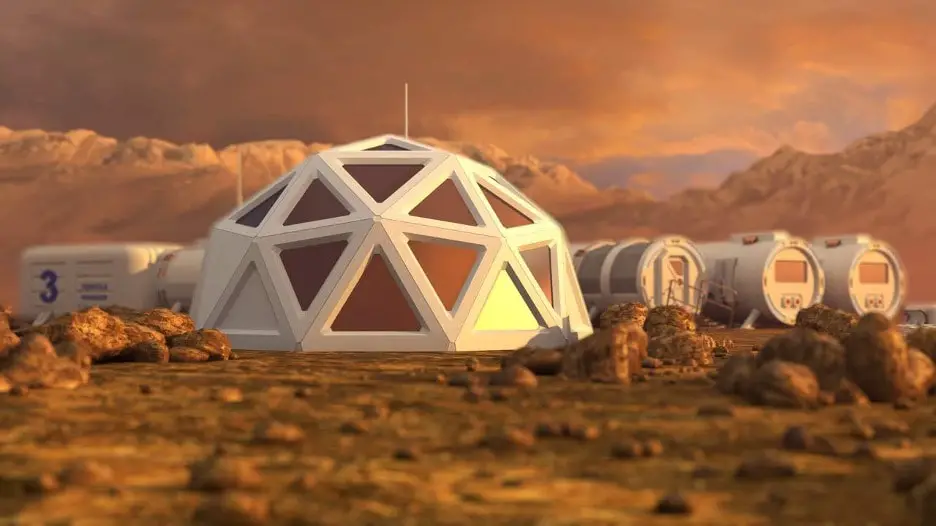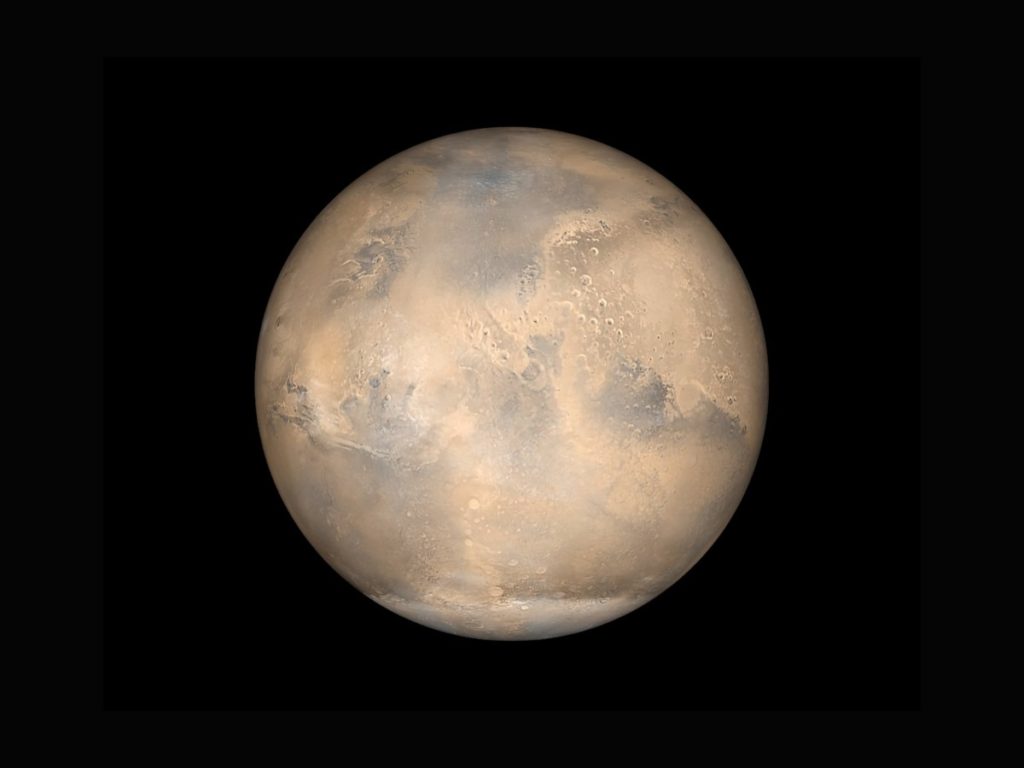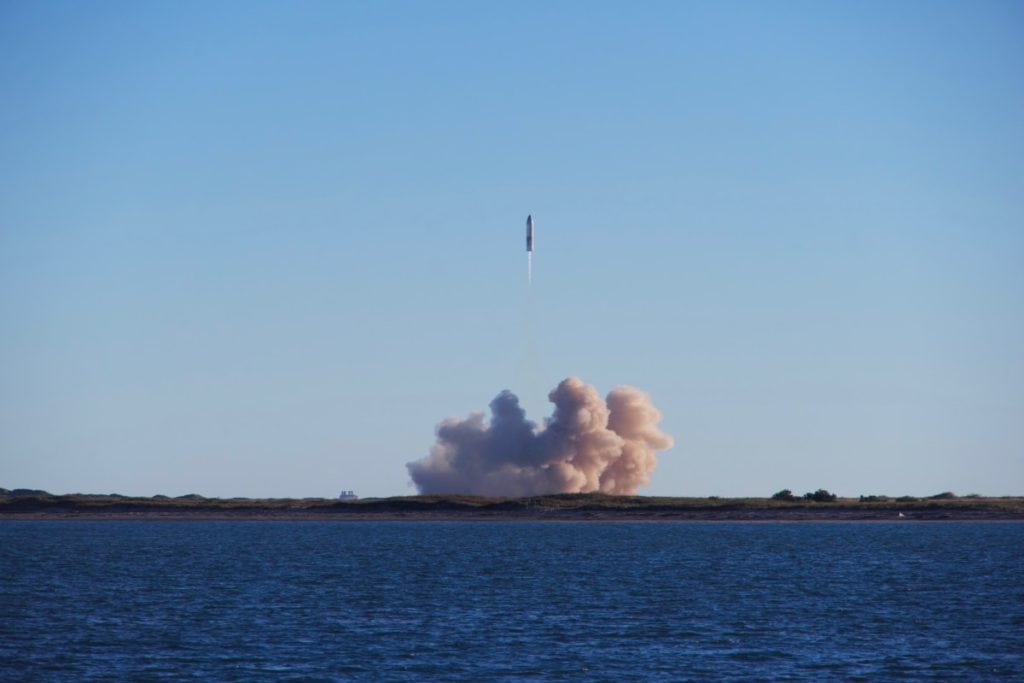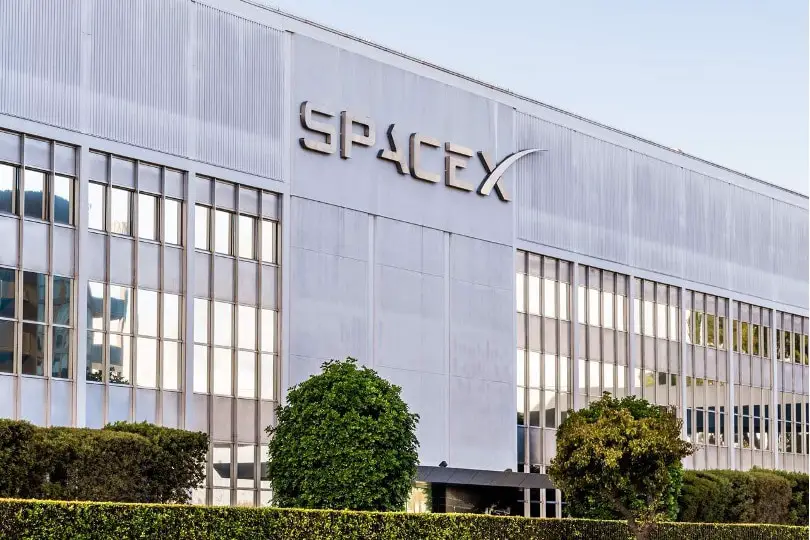
Space fanatic and entrepreneur Elon Musk has continuously expressed his deep interest in the human colonization of the planet Mars. But how does he plan to accomplish this anyway? Before your brain gets loaded with more questions than answers, let’s see if I can provide some clarity.
Elon Musk founded SpaceX in 2002, a company whose central vision lies with the ultimate goal for humans to colonize Mars. After vigorous trials and errors, SpaceX has slowly gained the traction needed for a possible Mars venture.
With that said, what exactly does musk have in mind? And why Mars?
The History of Elon Musk’s Vision: Efficiency
Elon Musk has always envisioned a future where humans are able to venture beyond the moon. To realize his ambitions, SpaceX was founded in 2002, a company focused on revolutionizing the aerospace industry by bringing forth affordable commercial spaceflight, with the ultimate goal of Mars colonization.
Although SpaceX’s first rocket – the Falcon 1, was unsuccessful in its first three launches, Musk redeemed his reputation by establishing SpaceX as the first private space company to successfully launch a liquid-fueled rocket into Low Earth Orbit (Falcon 1, 4th attempt, 2008). As a result, SpaceX gained the traction needed to obtain funding through subsequent contracts with NASA. (2)
Since then, SpaceX has evolved into an industry leader that excels in producing the most cost-efficient rockets.
Cost-efficiency is generally measured in dollar value per kilogram of weight, and NASA used to budget approximately US$94,996 per kilogram of weight on any given mission. Today, SpaceX has cut costs down to US$285 per kilogram of weight, with the ultimate goal of reducing it to just US$10. (4)
But logistics aside, we sometimes tend to focus too much on the details that we forget to ask the most basic of questions…
Why does SpaceX, more specifically Elon Musk himself, want to colonize Mars?
Or to simplify it even further… Why Mars?

Elon Musk and the Big Question: Why Mars?
Before Musk could set his sights on Mars colonization, he first had to answer the multibillion-dollar question: Why Mars?
To tell you the truth, the answer to this question is rather mundane and not what some might expect.
Mars was not and has never been the ideal planet for colonization. However, it might be the only possible option in our lifetime. Earth-like exoplanets are out of the question. Even the other celestial bodies within our solar system are simply too far and too costly for humanity to even consider the journey. This is even without mention of their unfavourable conditions that would most probably result in our imminent death.
For example, the length of a day on the Moon translates to roughly 29 Earth days, which means that one-half of Earth’s only natural satellite would always be experiencing an extreme cold worse than the arctic chill or extreme heat worse than the Death Valley.
What about the Gas Giants? Well, as their name suggests, these giant planets have no solid surfaces and pretty much exist as big blobs of gas.
And let’s not forget Venus, Mercury, and Pluto, whose extreme temperatures would laughably send us back to our maker (4).
Now, what about Mars?
Well, according to SpaceX, although Mars might look like a hot planet, it’s actually only slightly colder than Earth. This means it is entirely possible to heat it back up. The compression of the Martian atmosphere has also been considered to enable the growth of plants on Mars. Furthermore, the length of a Martian day is relatively close to Earth’s compared to the other celestial bodies. (3)
The Answer to How: Plans for Colonization
The power of ‘why’ and the power of serving a strong purpose has always made it possible for mankind to achieve the improbable. This reason for being must not be underestimated as it lends way to innovating the ‘how’.
Unmistakingly, Elon Musk knows his why.
So, how does he plan to colonize Mars? Would it even be possible?
Farfetched as it may seem – after all, humans are still clueless about roughly 65% of the Earth’s surface underwater – how are we to know the rule book for surviving on Mars?
Well, look no further. Musk has on several occasions proposed possible scenarios for the colonization of Mars. I have compiled a list of these occasions to make a one-stop-shop for everything you need to know about surviving on the Red Planet.
1. Transportation
Self-evident as it may be, transportation is the lifeline of any project to transform Mars into our second home. It literally makes or breaks the plausibility of colonizing Mars.
As mentioned previously, Musk plans to drastically reduce the cost for launching rockets down to US$10 per kilogram of weight, which is essential to making the trip to Mars possible. So, what does it exactly take for us to reach that level of cost-efficiency?
The answer is reusable rockets.
Unlike NASA’s old inefficient single-use rockets, SpaceX stresses the importance of reusability. Not only will this be more environmentally friendly, cause you know, we aren’t throwing around space debris and all, but it enables SpaceX rockets to become more efficient in terms of cost and time.

Elon Musk aims to launch at least three reusable Starship space shuttles per day, with each shuttle carrying at least 100 tons of payload each flight. This establishes an estimate of transporting 100,000 tons of cargo with the help of 1000 Starships on a yearly basis.
Elon Musk has also noted that 1000 Starships will allow for the transport of approximately 100,000 people every 26 months. 26 months serves as the length of the Earth-Mars orbital sync, which suggests the amount of time it takes for the Earth and Martian orbits to align best for transportation. (1)
But why exactly does a fleet of starships need to carry at least 100,000 people every 26 months? These numbers seem a little too specific to be a coincidence.
As it turns out, Musk has formulated that in order for the Mars Colony to be self-sustainable, there must at least be one million people present. The number one million exists as the population wherein people can build, manufacture, and produce anything to survive without the reliance on supplies from Earth. (4)
Currently, SpaceX is developing the BFR, also known as the Big Falcon Rocket(or the Big F**king Rocket, as per the internet), which is a 25-story monster that can support loads up to 1000 tons.
The Raptor engine has been developed and manufactured by SpaceX to power the BFR. While one Raptor is already capable of lifting 172 cars, which equates to an entire Boeing 747, one can only imagine the amount of thrust from the BFR that houses 42 powerful Raptors. This design has been brought to life the BFR is expected to house not only the crew and life support, but also theatres, restaurants, lecture halls, and zero gravity game centers. (4)
Payload is one thing, but without fuel or energy, the BFR isn’t going anywhere.
Elon Musk and SpaceX have collectively presented their support for utilizing the frozen polar ice caps on Mars to refuel the Starships, which enables them to travel to the Red Planet without carrying the fuel required for the trip back to Earth. This would be made possible by converting water and carbon dioxide in the polar ice caps to liquid methane and liquid oxygen, which act as proponents of fuel for the Starship’s engines. (7)
Although promising, it has been noted that the aforementioned are only sketches of the future for now.
In the present, SpaceX has only been focused on developing interplanetary transportation that is both safe and cost-efficient. Projects for creating human habitats on Mars have been given lower precedence. However, SpaceX has confirmed they are without a doubt on the right trajectory towards that inevitable possibility.
2. Supplies
All things considered, humans will not be the only passengers of the starships. Cargo is also an integral part of any mission. From the bare necessities to the movie theatres, and let’s not forget Vitamin C… which is all considered to require additional space and money for transport!
Vitamin C was provided by Musk as a stark example for what might not be as significant when compared to necessities like food, water, oxygen, and shelter, but is still essential nonetheless. As a resource that’s not readily available, Vitamin C is required if the inhabitants of Mars do not want to die a sailor’s death (scurvy).
Elon Musk has more than once emphasized that one of the keys to unlocking the colonization of Mars is the ability for the colony to achieve self-sustainability. The reason behind this obsession lies in the eventuality that if supply ships were not able to reach Mars due to unforeseen circumstances, the colony must be able to provide enough sustenance for its citizens.
How much time it will take a colony to achieve full self-sustainability is still very much up in the wind. As such, it’s of utmost importance to map out what resources are needed before every expedition. In terms of Vitamin C, Musk estimates that it will take a thousand starships to transport approximately one million tons of Vitamin C to ensure that no one dies a slow, painful death. (1)
For the first few runs, SpaceX has planned two uncrewed missions to send cargo such as life-support systems and power generators, which are essential for human habitation. After the initial missions, SpaceX plans to send two additional cargo ships to set up a propellant production plant, but this time with a crew.
This propellant production plant will ultimately be used to transform water and carbon dioxide into rocket fuel, which maximizes cargo space by reducing the amount of fuel each starship has to carry for the return trip.

3. Terraforming
Mars, as we know it, is a planet with harsh and uninhabitable terrain. There is barely any oxygen or water, and did I mention the crazy dust storms? Mars may be uninhabitable for now, but scientists, and yes, Elon Musk, believes that through the process of terraforming, humanity just might have a second home in space.
Musk has formulated many methods for terraforming Mars, but there was one that unfortunately stood out from the rest. If you haven’t guessed it, this boisterous plan of his was to NUKE Mars.
Now, comical as it seems, it does hold its own water in the scientific domain.
Before you complain about my wonderful sense of humour, hear me out first. ‘Water’ was not a typo.
Musk hopes the nuking of Mars’ polar caps would release both water vapour and carbon dioxide into the Martian atmosphere, which by emulating a greenhouse-like effect that would slowly increase Mars’ surface temperature. (5)
Nonetheless, scientists considered this plan to be quite infeasible. As, for one, the number of nukes needed would exhaust all nuclear warheads on Earth today. Another issue was the concern of there not being sufficient carbon dioxide present in the Martian atmosphere, even after the polar ice caps get absolutely obliterated to emulate a greenhouse-like effect effectively.
Many brains later, a conclusion was reached that terraforming Mars was just not possible with the technology of today. (8) But with everything considered, this has not stopped SpaceX from attempting to formulate new ideas on terraforming Mars.
For example, one possible solution that has been very popular even beyond niche groups is the implementation of glass domes on the surface of Mars.
Glass domes are the supposed self-sustaining domes with their own source of water, oxygen, and food. These domes were also expected to act as neighbourhoods and contain centres for leisure and work. And to quote Musk, the domes would “have an outdoorsy, fun atmosphere,” having the perks of not requiring space suits. Food in this habitat would also be grown on solar-powered hydroponic farms located underground or within enclosed spaces. (1)
However, like most things relating to Mars, experts believe that this is hardly possible with our current technology.
Ultimately, Elon Musk has acknowledged the impossibility that we would be able to experience the terraforming of Mars in our lifetime. However, Musk has assured the public that even without terraforming, human colonies on Mars can and will be established within this generation, which is also his current and final goal. (8)
4. The Legal Side of Things

Like all things, the very concept of colonizing Mars does not escape the normality of ethics.
Given the establishment of space law concerning the Agreement Governing the Activities of States on the Moon and Other Celestial Bodies, SpaceX Mars has also deemed Mars a free planet and, therefore, has rules and legislations of its own, disparate from Earth.
Elon Musk has openly proposed that there will be no Earth-based government asserting its authority and sovereignty of Martian activities. However, he has also stated that the government on Mars would be a “direct democracy” and would have less complex laws than Earth.
Beyond Imagination: Is It Profitable?
Beyond the lack thereof technology and volunteer participants, there will always be one thing at the back of our human brains: Is the colonization of Mars profitable?
No matter how self-sustaining the Martian colonies will be, as long as it requires more money than it will make us, the whole idea is inevitably moot without investors.

Arguments have been made that not only is Mars distant, has a hostile environment, and is difficult to access, but it also has no apparent valuable export, thus making it highly unprofitable. Elon Musk has also confirmed that trading mined minerals to Earth is not profitable enough to justify the transportation costs. (6)
On the flip side, Musk has also made efforts to propose intellectual property as Mars’ primary export. But even still, without having total cost estimates for the process of colonization, this would mean that we and any investors could only hope for the best: a profitable and sustainable Martian colony.
Unless a Martian colony can create its own value, governments and enthusiasts would need to pay out of pocket for this advancement in human civilization.
The Internal Monologue: Why Do We Need To Go?
Why do we need to go to Mars? Why can’t we stay on Earth and live our lifetimes to the fullest? Why must we seek a challenging, dreary, and frankly very costly path?
In an interview with The Guardian, Elon Musk has revealed some of his reasons for showing such a deep interest in colonizing Mars; one of which is the preservation of the human species. (9)
With ever-present nuclear tensions, Musk explained that due to distance, in the event of a third world war or nuclear warfare, humans on Mars can continue to live and reproduce, even without help from Earthlings. (9)
Musk has also been alarmed by the lack of regulations regarding artificial intelligence, which can lead to a possible war between and within the superpowers of the world.
Morbid situations aside, the increasing interest of rich Earthern populations for interstellar tourism, especially with the advances made by SpaceX to the Starship’s cost-efficiency, the creation of a Mars colony becomes a lot more attractive.
Curiosity for Innovation: Three Frequently Asked Questions about the Colonization of Mars
1. When can we expect missions to Mars by SpaceX?
Elon Musk and SpaceX have revealed their rough timeline with plans for a cargo-only mission in 2022, a cargo and crew mission in 2024, and then a million people to Mars by 2050. However, doubts cast upon these plans as SpaceX has yet to prove that it can land and launch Starship missions to Mars safely. (1, 7)
2. What happened to the Mars One Project?
The Mars One Project sought to offer humans a one-way mission to Mars. By August 2013, it had received over 4000 serious applicants. (4) However, It was reported that Mars One was permanently dissolved as a company in 2019 after declaring bankruptcy in a Swiss court on 15 January 2019.
3. How long does it take to go to Mars?
With a distance of over 480 million kilometres or 300 million miles, a trip to Mars will take approximately seven months. The space shuttle must be travelling at extreme speeds of 24,600 miles per hour or 39,600 kilometres per hour to make this happen. (10)
This trip is only possible as of now every 26 months, as it is the time span to which the orbits of Mars and Earth are nearest to one another. This time frame will not only save time but energy.
References
- https://www.cnbc.com/2020/03/09/spacex-plans-how-elon-musk-see-life-on-mars.html
- https://www.britannica.com/topic/SpaceX
- https://www.spacex.com/human-spaceflight/mars/
- https://www.trtworld.com/magazine/elon-musk-s-astonishing-mission-to-colonise-mars-here-s-how-he-ll-do-it-42246
- https://edition.cnn.com/2020/09/08/tech/spacex-mars-profit-scn/index.html
- https://www.forbes.com/sites/quora/2016/09/26/is-there-a-fortune-to-be-made-on-mars/?sh=4020a1146e28
- https://www.space.com/spacex-starship-mars-transportation-plans.html
- https://www.marketwatch.com/story
- https://www.theguardian.com/technology/2018/mar/11/elon-musk-colonise-mars-third-world-war
- https://mars.nasa.gov/mars2020/timeline/cruise/

